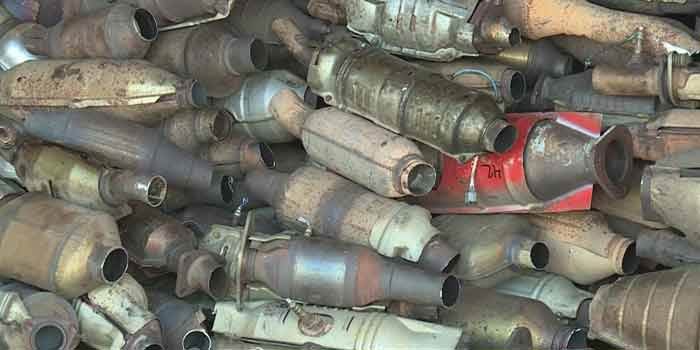
Automotive
About 60 per cent of the country’s pollution in the mid-1960s came from cars. The Environmental Protection Agency (EPA) has implemented a variety of regulations to combat this and other types of pollution, most notably the Clean Air Act in 1970 and a later amendment mandating the American auto sector to reduce vehicle emissions significantly.
In 1975, the first automobiles with catalytic converters hit the streets. Still, the industry was plagued by legal battles and was slow to adapt to new standards and regulations throughout the following decades.
Vehicle emissions have dropped by almost 75% since then. Please see QLD Catalytic Converters if you have any issues with this critical component. Your vehicle’s efficiency and environmental friendliness might benefit from routine maintenance on the catalytic converter.
The catalytic converter is used in internal combustion engines to reduce pollution. Catalytic converters are a standard component of the exhaust system of almost every motorized vehicle, including forklifts, mining equipment, vans, buses, railroads, and automobiles and trucks.
Hydrocarbons that aren’t entirely burnt may be chemically combusted with the help of this essential ingredient rather than released into the environment. The catalytic converter changes harmful emissions like carbon monoxide into safer ones like carbon dioxide and water.
As was previously established, the automotive exhaust was a significant contributor to dense smog until the development of catalytic converters. Because of the severity of the problem, the EPA passed new regulations and imposed stringent limits, and this part of the system was designed to deal with three harmful chemicals:
The catalytic converter is a bit of a brain teaser due to its intricacy. A catalytic converter uses a coating of platinum and palladium on ceramic honeycomb or ceramic beads, which are then placed in a muffler-like cage and connected to the exhaust pipe.
To create carbon dioxide, it reacts with carbon monoxide. The hydrocarbons decompose into carbon dioxide and water. On top of that, the nitrogen oxides are decomposed back into their component elements. Your car will fail Colorado’s emissions test if it lacks a catalytic converter.
Because it generates so much heat, the catalytic converter was traditionally placed near the powerplant. So what happened? Vapor lock turned the liquid fuel in the vehicles into gas. This isn’t good. The exhaust smelled terrible because of a sulfur chemical reaction in the converter.
If a catalytic converter functions correctly, you probably won’t even know it’s there. However, there are a few telltale indicators of a broken catalytic converter. You can find many scrap catalytic buyers in Sydney so that you can sell it to them. For illustration, consider the following:
If your engine performs poorly, the catalytic converter may degrade. If obstructed, the exhaust flow might be impeded, causing the vehicle to jerk or misbehave while attempting to accelerate. A damaged container will leak. Both affect the fuel economy and performance of the engine. This component may overheat if the engine is misfiring.
Intense rattling noises may indicate danger. When a catalytic converter receives internal damage from high fuel mixtures, the coated honeycombs inside the converter may collapse or separate. This might cause rattling. As the vehicle moves, the rattling often gets more severe and noticeable.
The check engine light may sometimes illuminate if there is a problem with the catalytic converter. The oxygen and air-fuel ratio sensors estimate the efficiency of the catalytic converter by measuring the number of gasses in the exhaust. If the catalytic converter is defective, the check engine light will illuminate.
There are several possible interpretations for the check engine light. Bring your vehicle to QLD Catalytic Converters, and we will assist you in diagnosing the problem and performing any needed repairs, including, if necessary, replacing your catalytic converter.
Thieves may have your catalytic converter for sale as they may earn a good amount for it. Catalytic converters are astonishingly stolen for the platinum, palladium, rhodium, and gold they contain. Occasionally, thieves remove the converter by severing the exhaust. In addition to losing your catalytic converter, you may also have damage to your fuel and electrical lines.
While other components of your vehicle’s exhaust system may be to blame for its failure to pass, the catalytic converter may also be to blame. If oil, antifreeze, or any other fault has leaked into it, pollutants will not be effectively distributed. This will indeed be shown through testing.
Low fuel economy, foul-smelling emissions, slow acceleration, and rattling sounds may result from a faulty catalytic converter. Therefore, please bring it to Scrap catalytic buyers in Sydney. The automobile professionals at QLD Catalytic Converters have spent years studying every facet of the catalytic converter for sale. They can comprehensively analyze, detect potential issues, and swiftly resolve them.